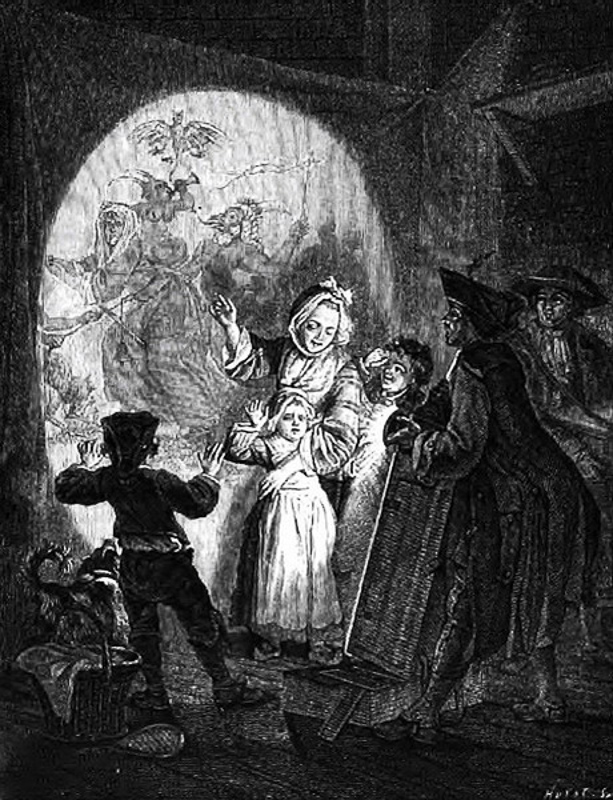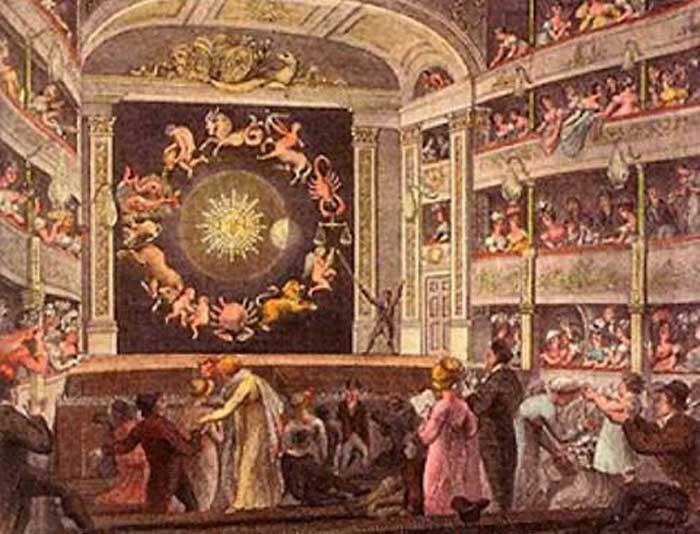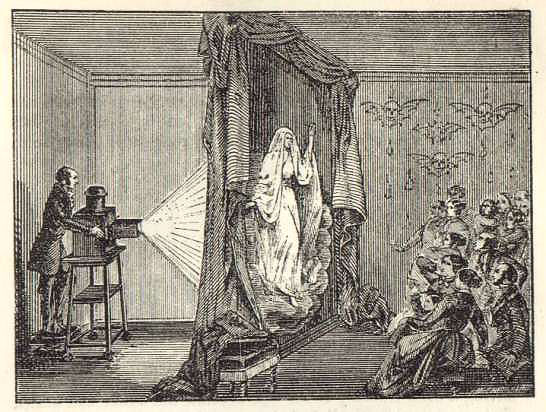Phantasmagoria - origin of cinema storytelling
Phantasmagoria is a term that refers to a type of magic lantern show that was popular in Europe in the late 18th and early 19th centuries. These shows were a form of early cinema, and they played a significant role in the development of cinema storytelling.
The magic lantern, also known as the phantasmagoria, was an early projection device that was used to create illusionary images by shining light through slides. This device was used to project images onto walls or screens, creating the illusion of moving images. The phantasmagoria shows that were performed using this device often included elements of horror and the supernatural, which made them popular among audiences at the time.
The origins of phantasmagoria can be traced back to the late 18th century, when a French magician named Étienne-Gaspard Robert began performing magic lantern shows in Paris. Robert’s shows were known for their haunting and ghostly images, and they quickly became popular among audiences. In the years that followed, other performers began to adopt the phantasmagoria format, and the shows became increasingly elaborate, with special effects such as fog and music being added to create an even more immersive experience.
The phantasmagoria played a significant role in the development of cinema storytelling. The use of the magic lantern and the creation of illusionary images with slides was a crucial step towards the development of the motion picture. The phantasmagoria shows also demonstrated the potential of the cinema to evoke emotions and convey stories, which would eventually lead to the creation of narrative films.
The phantasmagoria was also instrumental in shaping the early horror genre in cinema. The horror elements of the phantasmagoria shows, such as ghostly apparitions and supernatural themes, helped lay the foundation for the horror genre in cinema. The phantasmagoria shows of the late 18th and early 19th centuries set the stage for the creation of horror films, which would later become a staple of the cinema.
Prelude (Before 1750).
Before the advent of phantasmagoria, storytelling through moving images was limited to puppet shows and shadow plays. These shows were performed using simple devices such as hand-drawn slides, lanterns, and magic lanterns. These shows were popular in fairs and festivals, but the technology was not advanced enough to create the illusion of moving images.
Johann Georg Schrepfer.
The first recorded instance of phantasmagoria was by Johann Georg Schrepfer, a German showman, who used magic lanterns and smoke to create ghostly illusions. Schrepfer’s phantasmagoria shows were performed in the late 1700s and were a hit among audiences. The show consisted of ghostly images projected onto a screen, and the smoke and darkness added to the eerie atmosphere, making the images seem more lifelike.
Physicist Phylidor.
In the early 1800s, a French physicist named Phylidor created a device that used multiple magic lanterns to create moving images. He called his invention “Fantasmagorie,” and it was a huge success. The device used multiple slides and a crank mechanism to create the illusion of movement, making it the first instance of what would eventually become cinema.
Robertson.
In conclusion, the phantasmagoria is an important part of the history of cinema storytelling. The magic lantern shows of the late 18th and early 19th centuries helped to lay the foundation for the development of motion pictures, and they played a significant role in the evolution of the horror genre in cinema. The phantasmagoria remains an important part of the legacy of cinema, and its impact on the development of storytelling in film continues to be felt today.









Comments
Post a Comment